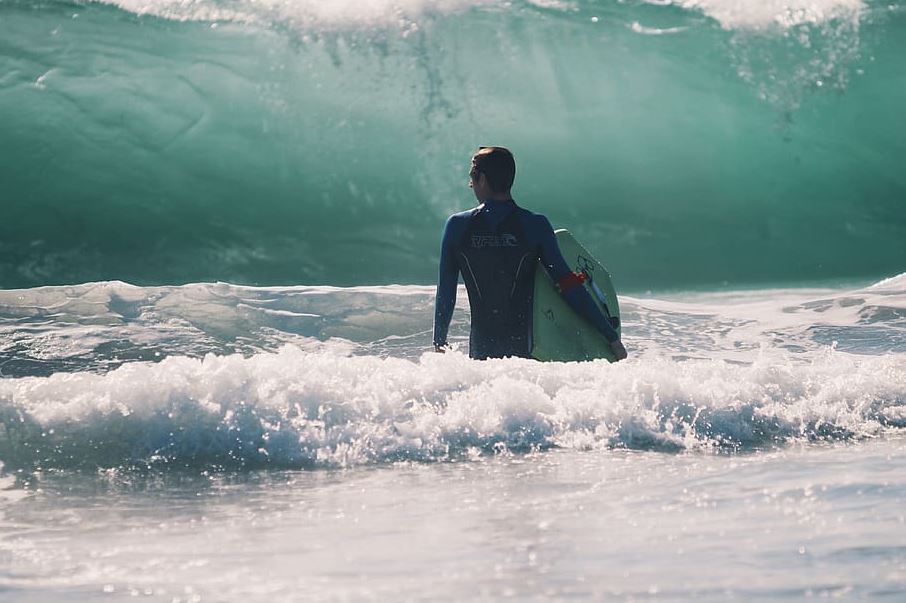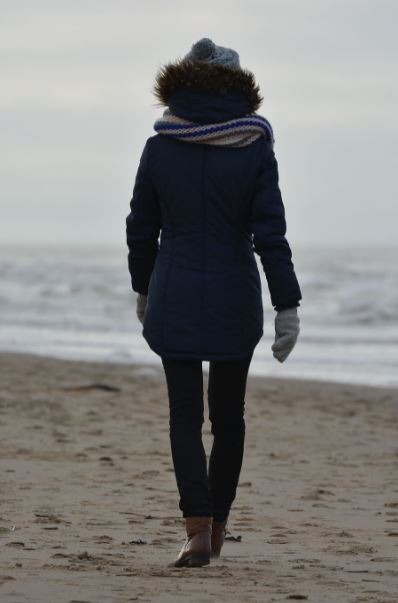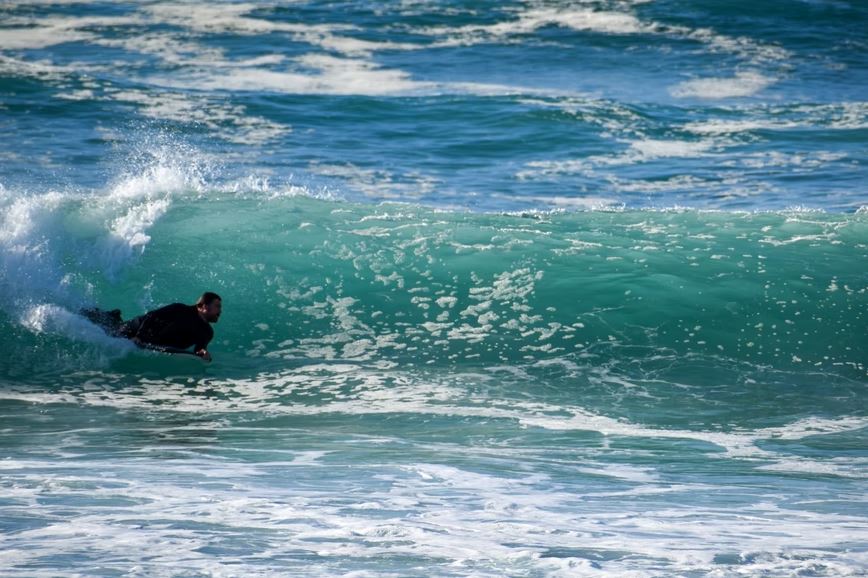Bodyboarding is a vigorous sport and a full-body workout. While it’s so fun to do on sunny beaches and palm trees, doing the sport during colder months can be challenging. Bodyboarding in warm summer months can offer better weather, but it only gives ankle-high waves, crowded beaches, and endless flat spells. There’s a lot of benefits to cold water bodyboarding, including bigger waves and emptier beaches.
For a beginner surfer or even an experienced one who has relocated to a new, colder place – the frigid air and cold water can be discouraging. But fear not: here are some tips for staying warm while bodyboarding.
Stay warm right before your session.
It’s essential that before you get into the sea, you stay warm. It’s harder to stay warm when you’re already feeling cold.
Keep the coat and your cozy hat on for as long as possible before entering the water. Try to change under a changing robe or under a coat to keep your body warm for as long as possible. With some practice, you can get changed in the car or at home if you live near the beach. Once you’re dressed, keep your wetsuit to your waist and boots on for as long as possible, and only change to wear your bodyboarding attire at the last minute.
Wear a quality winter wetsuit.
There’s no getting away from a winter wetsuit if you’re going to the sea in the winter. You will need to embrace all things neoprene and some of the thickest wetsuits you can find. The rule of thumb is the thicker the neoprene, the warmer the suit. However, thicker isn’t always better because it restricts your movement and your adventure. This is why some hardy souls embrace cold water swimming and build enough tolerance not to need a winter wetsuit.
Don’t scrimp on your suit and find the best that you can afford. While it won’t protect you from cold water, it can act as an insulator that traps water between the skin and suit, allowing your body to warm that water and keep it there.
Here are some ideal winter wetsuits to consider:
- A wetsuit with polypropylene lining is an excellent option as it can provide insulation and protection to your body.
- A wetsuit with a connected hood effectively insulates the head and helps keep your body temperature regular.
- A front-zipping wetsuit is ideal because it has fewer gaps compared to back zip suits, and the zip itself is smaller, which will lessen the likelihood of cold water entering your suit. With chest-zip wetsuits, you also don’t need Velcro on the neck section.
Another important tip: make sure your wetsuit has no holes in it. A slightly leaky wetsuit doesn’t matter in thin summer rubber, but the smallest perforations in a winter wetsuit can let in the ice-cold water. This is why most regular winter water sports enthusiasts get a replacement suit every other year. When it starts to sprout holes, you either need to replace it or patch it up. You can use neoprene glue to seal up the holes yourself.
Wear booties and gloves.
If there is an accessory that can be a gamechanger for your cold water bodyboarding adventure – it’s booties. It’s a known fact that if your feet are cold, the rest of your body will feel cold. Booties wetsuit booties can make a huge difference in the water because it acts as a thick and protective sock to keep your feet out of the chilly waters. Instead of walking barefoot, as usual, booties can offer protection from the cold. Always wear wetsuit booties to keep your feet snug and warm. Booties with straps across the ankle can give added support to the foot, and the strap allows you to minimize the amount of water that enters them.
The same goes for gloves. If your hands are numb from the cold, it’s hard to move in the water to the bodyboard. Wear a pair of thin gloves with single-lined neoprene material on the outside so your hands can be warmer while enabling you to still get a good grip on your board.
Wear a thermal underlayer.
If your wetsuit isn’t lined, make sure you wear a thermal underlayer to ensure that your body doesn’t lose too much heat during winter bodyboarding. Put this layer of thermals on before you leave the house to keep you warm.
Pour some hot water into your suit before hitting the waves.
Coldwater that enters the wetsuit takes some time to warm up from the body’s heat. Prevent experiencing that bone-chilling period by filling your suit in the parking lot with heated water. You can do this by bringing a large thermos with warm water to the beach. Dunk your boots, hoods, and gloves in it before pulling them on.
You can also bring coffee or any warm drink from a thermos to enjoy later after your cold water adventure.
Keep moving.
This sounds like a no-brainer, but it’s amazing how often surfers and bodyboarders become sitting ducks in between waves. You may be tempted to conserve your energy, but instead, it stops the blood from circulating and invites in more of the cold. While you’re waiting for the perfect wave to ride, it’s best to keep paddling even in circles to keep your blood flowing and keep the water inside your wetsuit warm.
The more you keep moving around, the more your heart rate will increase, which will keep the body generating heat. It’s important not to be idle in the cold waters!
Ride a board with flex.
Frigid temperatures can make the core of your board stiff. If you have the option, go for the most flexible one. Boards with a PE core are great to use during the winter months due to their increased flex.
Warm-up slowly.
It can be tempting to head straight for a hot shower or a warm bath after getting home from a winter bodysurf. But that would be the worst idea, as it can cause after drop.
After drop happens because when you swim, the body shuts down circulation to the skin and pools warm blood to the core, so you stay in the water longer. But as you get up from the water and start to warm up, blood starts to recirculate in your blood vessels and extremities, cooling it down as it travels. You can easily lose up to 4.5 degrees Celsius from your core temperature, causing shivering, hypothermia, or feeling unwell.
The key to warming up better is to warm up slowly and gradually. If you rush it, it can lead to rapid cooling afterward. Increase your core temperature gradually by doing it in a step-by-step process. Warm-up in stages by drying off, sipping a warm drink, putting on warm clothes, and sipping more warm drinks.
Choose your pre-bodyboarding meal carefully.
The higher the water content of food, the cooler it will make your body. Fruits and veggies are mostly made of water and are easy for the body to digest, so they can make your body temperature drop. Carbohydrates, proteins, and fats are much harder for the body to break down, so they can cause your body temp to rise. This means bodyboarding in cold water is a good excuse for that double-patty burger. Alcohol also has a warming effect, but don’t overdo it.
Change somewhere warm.
Your aim is to keep your body temperature as high as possible for as long as possible before, during, and after bodyboarding. One way to do this is to change somewhere warm and dry, not huddled behind an open car door trying to stop the wind from blowing away the towel covering you. Changing inside the car is an option, or wear your wetsuit at home and top it with your winter clothes, then drive to the beach in it. This way, you only need to remove your coat and other warming clothes so you can bodyboard easily.




